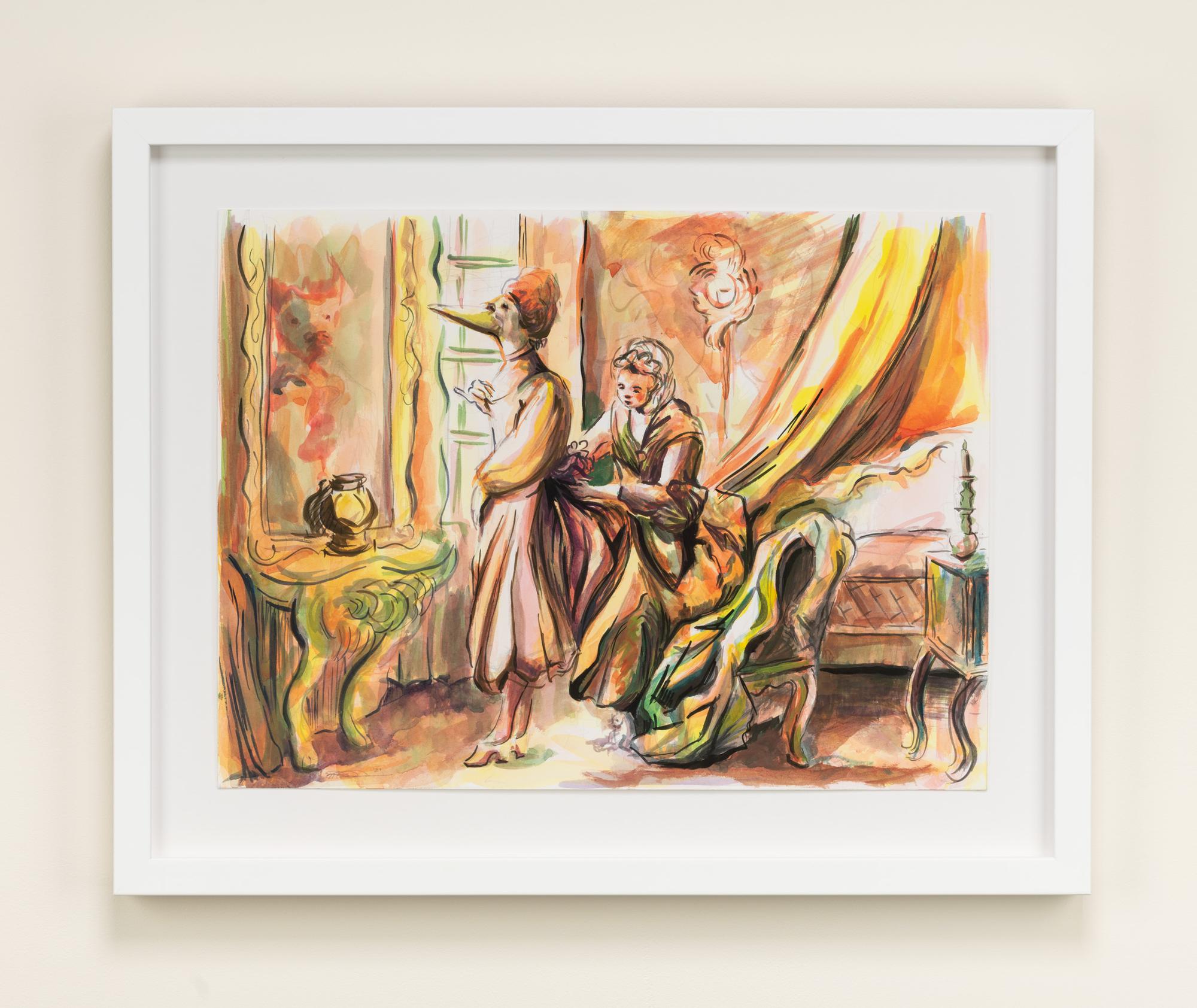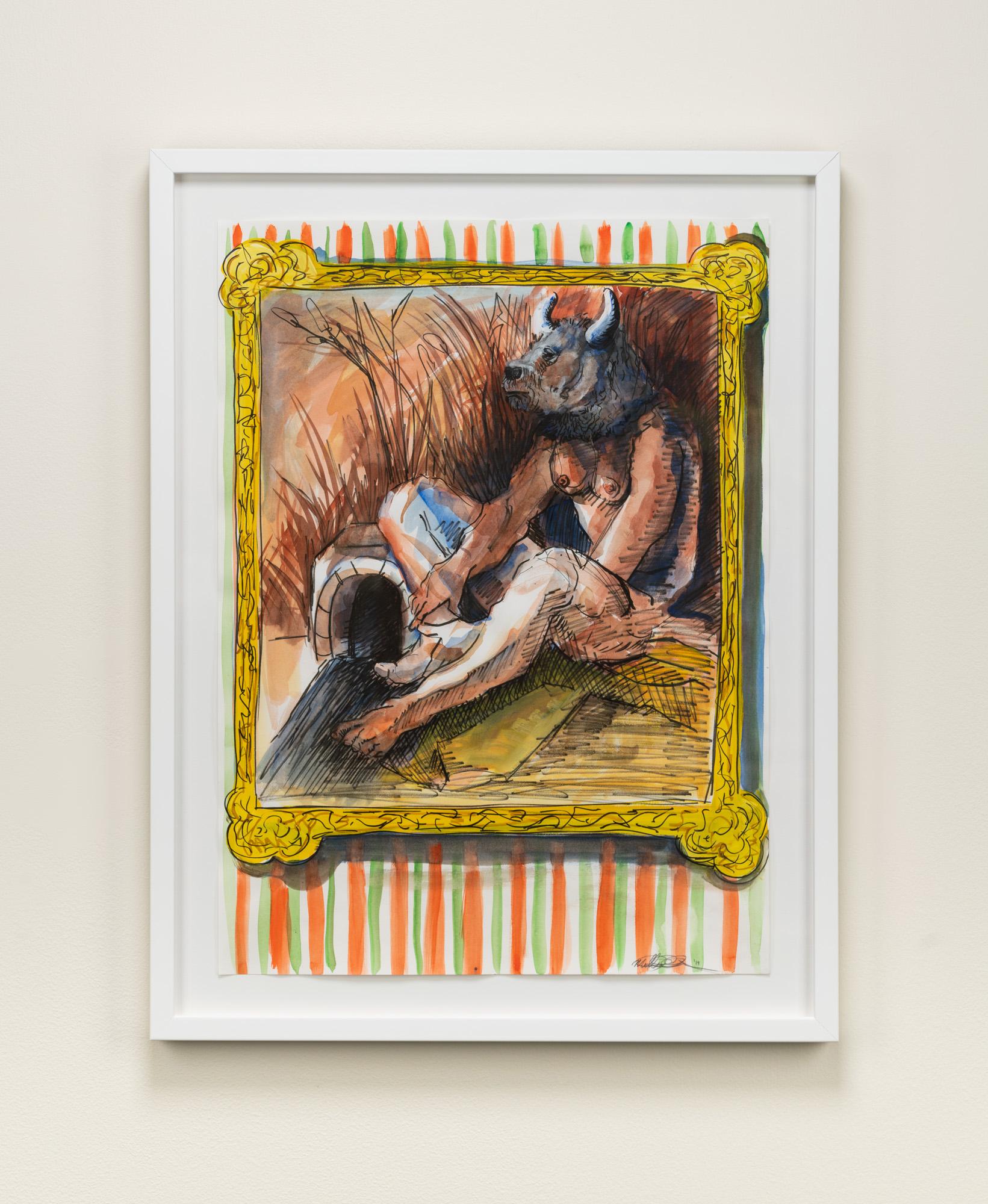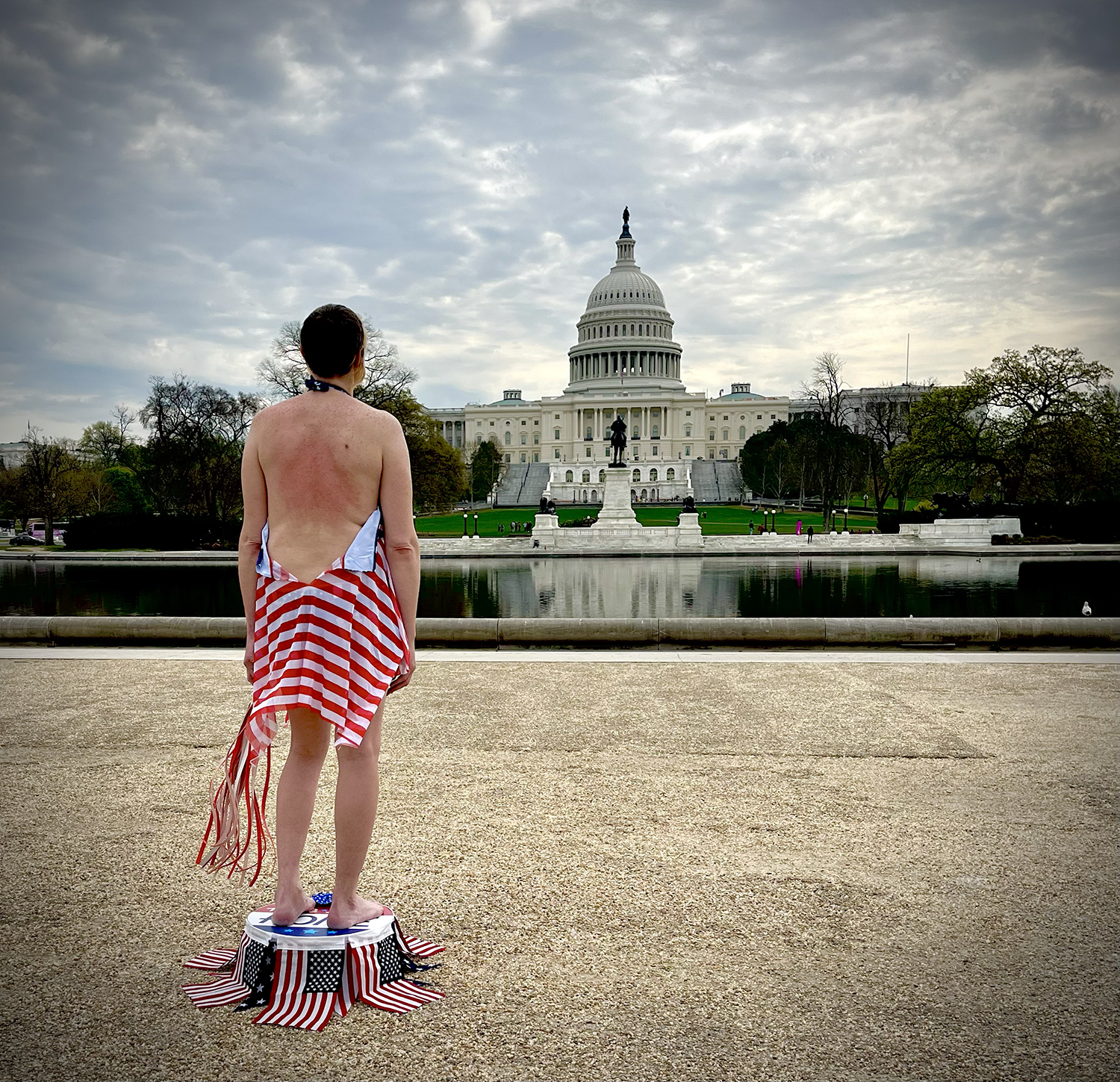Past
—
After Boucher
Molly Jae Vaughan
May 03 — June 16, 2024Fuller Rosen Gallery is thrilled to announce the opening of After Boucher, a solo exhibition showcasing the dynamic and visionary works of Molly Jae Vaughan. Inspired by the artistry of 18th century French painter, draftsman and printmaker François Boucher, Vaughan's collection breathes new life into the opulent world of the Rococo era while asserting a bold, queer narrative.
Join us for an opening reception on Friday, May 03 from 6-9 pm and an artist reception on Friday, June 07 from 6-9 pm.

After Boucher: A Lady Being Dressed By Her Maid, 2021, gouache on paper, 16 1/4 x 20 1/4 inches.
After Boucher features a selection of the more than 60 works Vaughan has completed based on the book The Drawings of François Boucher by Alastair Laing. In the second major solo exhibition of this body of work at Fuller Rosen Gallery, Vaughan re-introduces viewers to the pearlescence splendor of Baroque Europe where aristocratic gender constructs operated in a fluid array of warm pastels and powdered wigs. Vaughan — a Seattle-based artist and educator originally from the United Kingdom — meticulously replicates Boucher’s technical brilliance while infusing the works with transgender bodies, process color palettes, and mythological characters. The result is a series of stunning paintings, drawings and lithographs that challenge traditional gender constructs and celebrates the beauty of diversity, past and present.

After Boucher: Self-Portrait (study of), 2021, oil on linen, 12 x 9 inches.
Beginning the project in 2017 as a graduate student at the University of Southern Florida with the narratives of minotaurs and harpies, Vaughan’s desire to articulate her gender identity became central to her art making process. The art and fashions of the Rococo period, with their emphasis on youth and femininity, served as a starting point for Vaughan’s investigations into Western gender constructs.
From Boucher, Vaughan learned that the imagination offers a powerful vehicle through which the body can be explored, in particular through drawing. The narrative of the anamorphic transgender bodies in Vaughan’s work speaks to her personal struggles with her body; a body she had no words to describe other than “monster” for most of her life. The exclusion and erasure of transgender people in Western art history prompted Vaughan to re-insert herself and her body into classical allegories and historical portraits — clueing viewers into the fact that transgender people have always existed and deserve representation.
 After Boucher: Study of a Nude as a River God, 2019, watercolor, pen, and gouache on paper, 28 x 21 5/8 inches.
After Boucher: Study of a Nude as a River God, 2019, watercolor, pen, and gouache on paper, 28 x 21 5/8 inches.With subtle but notable augmentations, additions, transformations and alterations, Vaughan subverts the classist and predatory values of the Baroque era with her own cast of heroic, queer protagonists. A character seen throughout the series, as either a portrait figure or decorative element, is the minotaur. Vaughan’s minotaur is an empathetic and contemplative one; far removed from the bias and prejudice of the ancient Athenian myth. In Design for a Funerary Monument, Vaughan replaces a stately Roman-style profile with the gently tilted head of the minotaur. A memorial for traditional masculine and feminine gender roles, laying to rest the binary and embracing the spectrum in which gender exists in the contemporary world.
 After Boucher: Design for a Funerary Monument, 2017, lithograph on pale blue Stonehenge paper, 14 7/8 x 13 1/8 inches.
After Boucher: Design for a Funerary Monument, 2017, lithograph on pale blue Stonehenge paper, 14 7/8 x 13 1/8 inches.The work in After Boucher offers an exuberance of creative fantasy and queer reclamation mined from the Venus grottos and grand palaces of bygone Baroque royalty. Art history, gender dynamics, and patron-artist hierarchies are given a fresh infusion of jubilation and critique. Vaughan's exploration of gender dynamics and artistic patronage offers a fresh perspective on art history, inviting viewers to reconsider traditional narratives through a contemporary and inclusive lens. Through delicate yet profound alterations, Vaughan subverts the norms of the Baroque era, transforming historical portraits into vibrant celebrations of queer radiance.

Image of the artist at her protest performance April 9th, 2024 outside the US Capital.
Molly Jae Vaughan (b. 1977 London, UK, she/her) holds a Bachelor of Fine Arts from the School of Visual Arts in New York, NY and a Master of Fine Arts from the University of South Florida in Tampa, FL. Her work has been exhibited both internationally and nationally including MOTHA and Chris E. Vargas Present: Trans Hirstory in 99 Objects at the Henry Art Gallery at the University of Washington, We the People at the Minnesota Museum of American Art, and Molly Vaughan: Project 42 at the Seattle Art Museum. Most recently, Molly’s work was selected to represent the state of Washington in the international triennial New Worlds: Women to Watch 2024 at the National Museum of Women in the Arts in Washington DC. Vaughan has exhibited as a solo artist at Bainbridge Island Museum of Art, King Street Station, and the Frye Art Museum in Seattle. Group exhibitions include A Site of Struggle at the Block Museum of Fine Art at Northwestern University + Montgomery Museum of Fine Art, and Queer Threads at the San Jose Museum of Quilts and Textiles.
Vaughan was the recipient of the Betty Bowen Award in 2017 and has received grants from Art Matters Foundation, Visual Artists Network, the Pollination Project, and the Artist Trust. Her work has been featured in The Guardian, The Advocate, Surface Design Journal, City Arts Journal, Tampa Bay Times, and New American Paintings. In 2018, Vaughan presented a talk at TEDXSEATTLE that focused on how she uses her work to create memorialization actions and garments for transgender murder victims. Molly is currently a Senior Associate Professor of Art at Bellevue College in Bellevue, Washington.